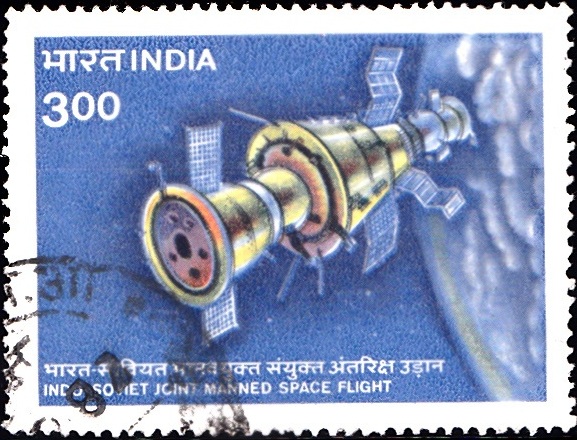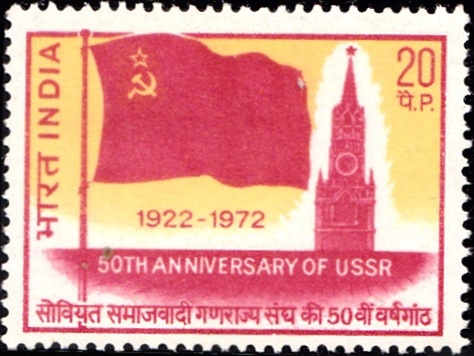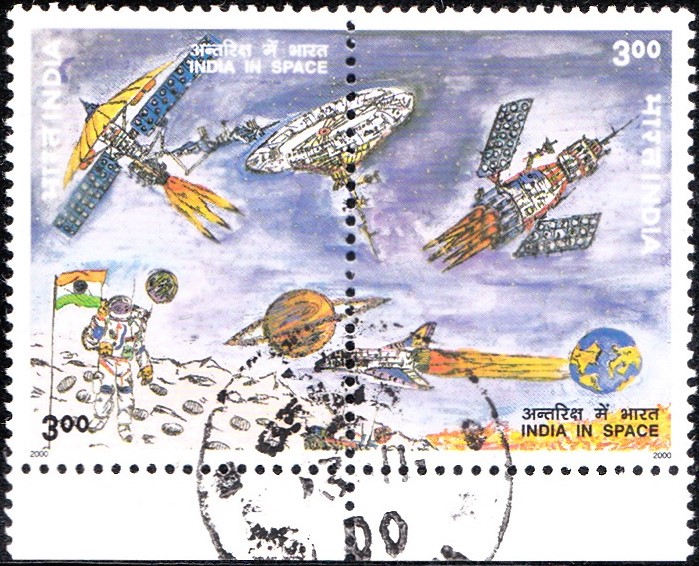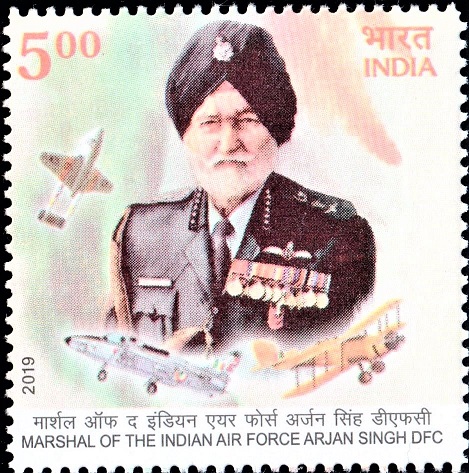
Indo-Soviet Joint Manned Space Flight
A commemorative postage stamp on the Indo–Soviet Joint Space Flight : Salyut 7 space station with 2 Soyuz spacecraft :
 Issued by India
Issued by India
Issued on Apr 3, 1984
Issued for : Indian Posts and Telegraphs Department is proud to issue a special stamp on this historic occasion.
Description of Designs : The stamp depicts the Soviet SALYUT-7 space station with SOYUZ space ships docked on either side of SALYUT-7. The Stamp and First Day Cover have been designed by R. N. Pasricha. The cancellation has been designed by Alka Sharma.
Type : Stamp, Postal Used
Colour : Multi colour
Denomination : 300 Paise
Overall size : 4.8 x 3.6 cms.
Printing size : 4.35 x 3.15 cms.
Perforation : 14 x 14
Paper : Unwatermarked Imported Gummed Coated paper
Number printed : 15,00,000
Number per issue sheet : 20
Printing process : Photogravure
Printed at : India Security Press
About :
- The Indo-Soviet Joint Manned Space Flight launching the first Indian into space took place from 3rd April, 1984 to 11th April, 1984. This mission was the outcome of the agreement signed between the Governments of India and USSR for the participation of an Indian Cosmonaut in the joint manned space flight launched by USSR in April 1984.
- Squadron Leader Rakesh Sharma, an outstanding test pilot of the Indian Air Force, became the first Indian to go into space when he alongwith two other Soviet cosmonauts orbited the earth for eight days during the Joint Indo-Soviet Manned Space Flight. Squadron Leader Rakesh Sharma and Wing Commander Ravish Malhotra were the two Indian Air Force officers selected through a rigorous process of selection for training of cosmonauts. After completing two years of training at Yuri Gagarin Centre, both had qualified to make the space flight. Two sets of crew had been formed, of which one was the main crew who actually participated in the space flight and the other was standing by. The main crew for the mission was Col. Yuri Malyshev – Pilot Cosmonaut and Commander, Sqn. Ldr. Rakesh Sharma – Researcher Cosmonaut and Mr. Gennady Strekalov – Engineer Cosmonaut. The standby crew comprised Col. Anatoly Berezovoi – Pilot Cosmonaut and Commander, Wg. Cdr. Ravish Malhotra – Researcher Cosmonaut and Mr. Giorgi Grechco – Engineer Cosmonaut.
- The joint space mission included advanced experiments on bio-medicine, material sciences and remote sensing sponsored by the Institute of Aviation Medicine of the Air Force, Defence Metallurgical Research Laboratory of the Defence Research and Development Organisation and the Indian Space Research Organisation respectively, in collaboration with Soviet Research Institutions. Some of the experiments were conducted for the first time and interesting results were expected to emerge out of the studies based on them.
- The crew for the space flight was launched on Soyuz T-11 transporter spacecraft with the help of Rocket-carrier Soyuz on 3rd April 1984 from Baikonur. Soyuz T-11 docked with the Salyut-7, the scientific orbital space station which was launched on 19th April 1982 and was in a near-earth orbit at an altitude of 360 KMs. A three member Soviet crew comprising Commander Col. Leonid Kizim, flight engineer Vladimir Solovyov and cardiologist Dr. Oleg Atkov had already reached the Salyut-7 space station on 9th February 1984 and received the crew of the joint mission when they docked with the Salyut-7. After completing the programme for the space mission, the joint Indo-Soviet crew made their touchdown on 11th April, 1984. The crew brought back with them the log of their activities, symbols which were taken to space and scientific data and results of the experiments conducted in space.
- Text courtesy : Air Headquarters.






